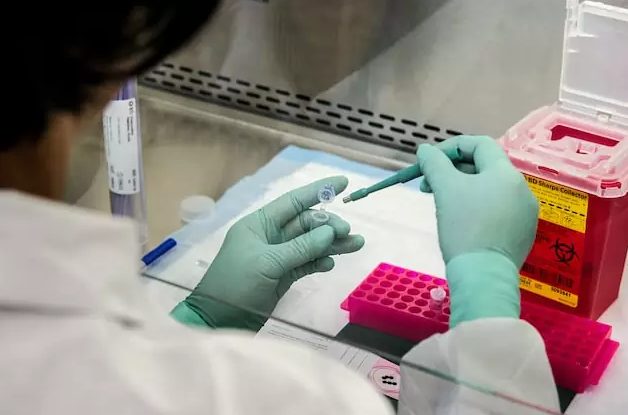Your crisp but helpful guide on teeth bonding procedure

The term “dental bonding” is used in a very wide sense. Usually it refers to almost every dental procedure that involves permanently attaching dental materials to the teeth of a patient. Moreover the procedure involves use of some kind of dental adhesive or the other along with high intensity light. Basically there are two types of composite bonding procedure, namely direct composite bonding and adhesive composite bonding. Examples of adhesive composite bonding include bridges, crowns and porcelain veneers. Tooth bonding procedures have their differences although they have one common thread running between them. Every tooth bonding procedure invented till date is meant to restore your damaged teeth back to their former glory.
Cosmetic bonding procedures are usually simple and uncomplicated. The procedures involve application of adhesive material to the damaged tooth and then sealing it properly. As a result of this effort the original shape of tooth gets restored. It is important to mention that the adhesive material that is mostly used in these procedures is resin. In comparison with other dental procedures these ones are indeed simple, linear and free of hassles. Every composite bonding procedure that is known till date falls under the category of adhesive dentistry. Adhesive dentistry deals with dental hard tissues, bonding mechanisms, various clinical techniques to facilitate bonding and obviously various adhesive substances.
Various techniques of tooth bonding are there in existence. These techniques are frequently used in various branches of dentistry ranging from preventive to operative dentistry. The bonding procedures are applied on every kind of dental patients. A dentist who offers reasonable cost for teeth bonding in London says the techniques are rampantly used in prosthodontics applications, paediatric dentistry, cosmetic dentistry and much more. Dental bonding is the most practical solution for you in case you suffer from a cracked or damaged tooth.
Tooth bonding procedure
As the first step to your tooth bonding procedure your dentist relies on a shade guide to select a composite resin colour that match closest to the natural colour of your teeth. This is also a crucial step in the procedure. If the colour of composite resin does not accurately match with the natural teeth colour then your bonded tooth will stand out in a striking contrast with the rest of your other teeth.
Once the colour matching is done the dentist moves on to the next step in the procedure. It involves carefully abrading the surface of your tooth. This is done to prepare the tooth for the bonding procedure. A little amount of an adhesive liquid is then used to coat the tooth with. This adhesive agent ensures the bonding material adheres to or stays on the surface of the tooth.
Up till now we were discussing the preparatory stages of the procedure. In the next step the dentist applies the composite resin to your teeth. The resin needs to be moulded and smoothened to give it the shape of your teeth. This step is followed by hardening the resin. It is done by application of UV rays. Alternatively dentists also use a dental laser instead of UV light.
Once the bonding substance turns hard it has to be trimmed and shaped further to match with the rest of the teeth in your mouth. A dentist with years of experience in teeth bonding in London says then the bonding material is polished. Thus it perfectly matches the natural colour of your teeth. The overall procedure lasts within the range of 30 minutes to an hour. In case you want to bond multiple teeth in that case you have to book a number of appointments with your dentist.
Once the bonding procedure is over you have to little careful and conscious about foods and drinks that you consume for the next 48 hours. During this time you are not supposed to have anything that may stain the teeth. In other words you should stay away from popular beverages like tea, coffee and red wine, etc. during this period. Make sure to discuss with your dentist beforehand the foods and drinks that you can have and have not.
Composite bonding
When composite bonding is concerned, it is always better to call it as direct composite bonding. It is nothing but a particular type of dental bonding procedure involving coloured composite resin. Coloured composite resin, in layman’s words, is nothing but a special variety of plastic. Composite bonding or direct composite bonding helps masking up decayed, diseased, discoloured or damaged teeth in your mouth. Why is it called so? This is a relevant question; as the plastic material bonds to your teeth hence it is called composite bonding or direct composite bonding.
Do you know composite bonding happens to be one of the most reasonably priced and easiest dental procedures anywhere in the world? Unlike many other dental procedures this one requires only a single visit to your dentist. A dentist who offers affordable and cheap tooth bonding in London has something important to say in the ongoing context. According to him one of the best things about this procedure is composite resin used in this treatment to bond with the tooth can be easily shaped to match the fractured or damaged area of the tooth.
It is a versatile solution for addressing various dental concerns related to tooth shape, size, and aesthetics. Dentists worldwide depend on it to address issues such as tooth discoloration, chipped teeth, and the closure of gaps between adjacent teeth. It is also a tried and tested solution to improve the overall appearance of teeth. It masks all deficits of the teeth to make those appear bigger, longer and improved both in terms of shape and colour.
It is important to mention that composite bonding happens to be one of the simplest dental procedures. It requires very little preparation. Usually anaesthesia is not administered on these patients. However if your Teeth Bonding Cost London is decayed or damaged then the dentist may administer you with anaesthesia to numb your senses during the procedure confirms a dentist associated with the Smile Clinic London Invisalign provider London.
The treatment is reasonably priced and thus easily affordable. However it is not usually available in the NHS. In other words you have to get it only from private dentists in the UK.






